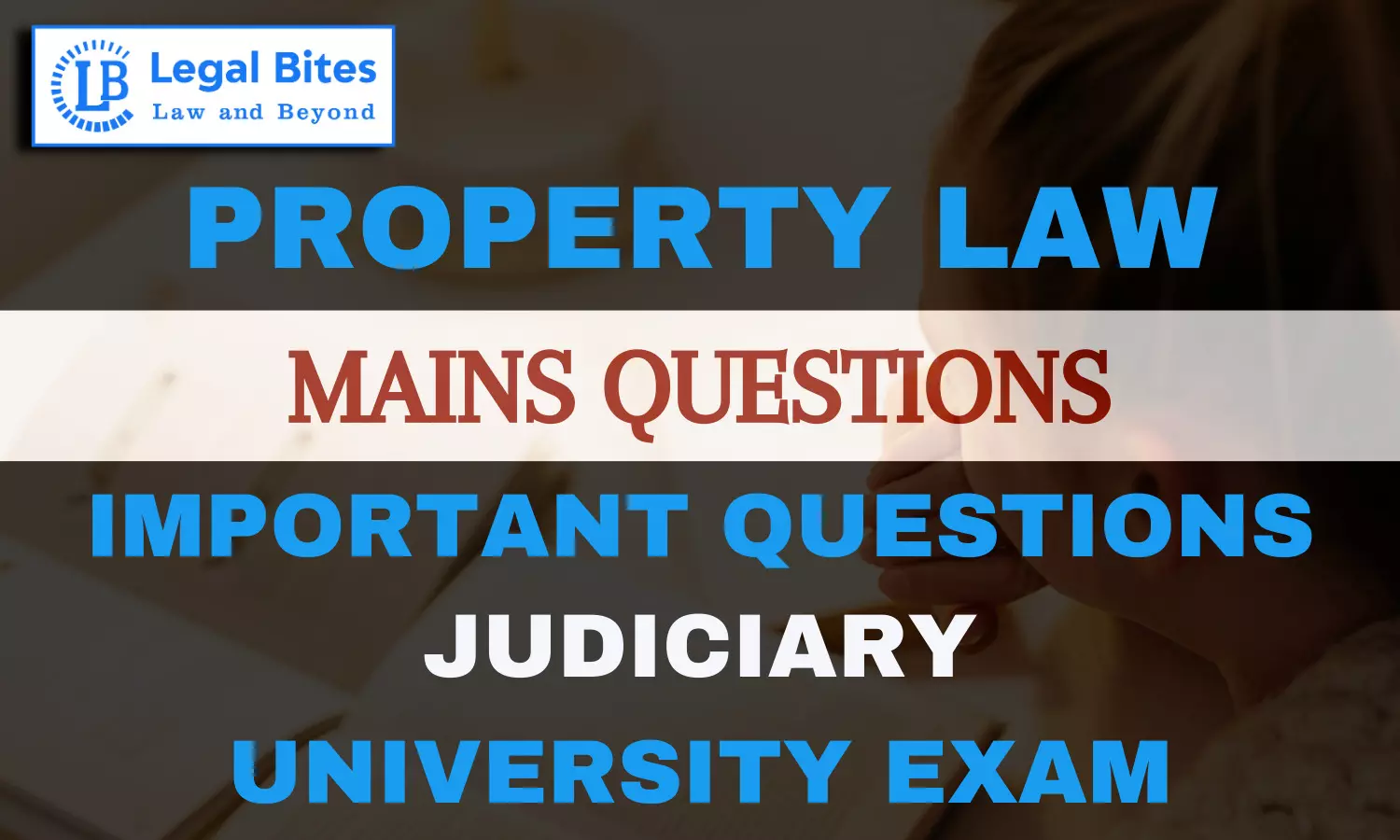Who is an Ostensible Owner? Is there any objective test...Are there any considerations which must be taken into account.....? Explain with the help of proper illustrations....
Find the answer to the mains question of Property Law only on Legal Bites.

Question: Who is an Ostensible Owner? Is there any objective test to describe whether a person is an ostensible owner? Are there any considerations which must be taken into account while deciding whether a person is an ostensible owner or not? Explain with the help of proper illustrations, relevant statutory provisions and judicial decisions if any. [Punj JS 2019] Find the answer to the mains question of Property Law only on Legal Bites. [Who is an Ostensible Owner? Is there any objective...
Question: Who is an Ostensible Owner? Is there any objective test to describe whether a person is an ostensible owner? Are there any considerations which must be taken into account while deciding whether a person is an ostensible owner or not? Explain with the help of proper illustrations, relevant statutory provisions and judicial decisions if any. [Punj JS 2019]
Find the answer to the mains question of Property Law only on Legal Bites. [Who is an Ostensible Owner? Is there any objective test to describe whether a person is an ostensible owner? Are there any considerations which must be taken into account while deciding whether a person is an ostensible owner or not? Explain with the help of proper illustrations, relevant statutory provisions and judicial decisions if any.]
Answer
Ostensible Ownership, a concept rooted in property law, pertains to situations where an individual appears to be the owner of a property but is not the true owner.
"Ostensible" means "apparent" or "seeming". Someone who looks to be the owner but isn‘t is known as an ostensible owner. He is an individual who possesses all indices of ownership having been true ownership. With the approval or conduct of the true owner, his behaviour and actions tend to be those of the property‘s owner.
For example, After obtaining her husband‘s permission, a wife began dealing with his land. Her name was written into the revenue records, and she made all of the relevant decisions about the tenancy agreement. In this situation, the wife will be the ostensible owner because it seems as if she is the actual owner of the land, while the husband is the true owner.
Section 41 of the Transfer of Property Act, 1882, deals with ostensible ownership. An ostensible owner is someone who, through actions or words, gives the impression of ownership to the external world, despite not being the actual owner. The core principle here is that they present themselves as the legitimate owner to third parties. This paper discusses the criteria, conditions, and judicial interpretations regarding ostensible ownership.
Essentials for Ostensible Ownership
For a person to be considered an ostensible owner under Section 41, several essential conditions must be met:
a. The Person's Status as an Ostensible Owner: The individual must act as the ostensible owner, creating an impression of ownership to others. This may result from express or implied consent from the actual owner.
b. Consent from the Actual Owner: The ostensible owner must obtain the consent of the true owner, either explicitly or implicitly. However, the real owner must have the legal capacity to grant this consent.
c. Transfer for Consideration: The ostensible owner's transfer must be conducted for consideration, and it cannot be a gift.
d. Good Faith and Reasonable Care: The transferee should act in good faith and take reasonable precautions to verify the ostensible owner's authority. The scope of "reasonable care" may vary according to the case's facts and circumstances.
Statutory Provisions
Section 41 of the Transfer of Property Act, 1882, specifically addresses transfers made by ostensible owners. It permits such transfers when the necessary conditions are met, thereby protecting the interests of innocent third parties who deal with the ostensible owner. The transfer will not be voidable merely because the ostensible owner was not authorized to make it.
Judicial Interpretations
Md. Shafiqullah Khan v. Md. Samiullah Khan, AIR 1929 ALL 943
In this case, illegitimate sons attempted to sell a property as ostensible owners. The court held that, for Section 41 to apply, there must be express or implied approval from the real owner to the ostensible owner. Since this was not the case, the section did not apply.
Nirvas Purve v. Mst. Tetri Pasin, AIR 1917 Calcutta 655
In this instance, a husband registered land in his wife's name before leaving for a pilgrimage. He then allowed her to mortgage the property, and later, the wife sold the land to a third party. The court ruled that the husband could not reclaim the land from the buyer if the buyer acted in good faith and took reasonable steps to verify the property's ownership.
Application of the Rule of Estoppel
Under Section 41, a principle of estoppel applies. If the actual owner convinces others that the ostensible owner has the authority to deal with the property, and if the transferee acts in good faith, the real owner is estopped from denying the ostensible owner's authority. This is to protect the innocent party who believed in the ostensible owner's authority.
Conclusion
In conclusion, an ostensible owner is an individual who creates the appearance of property ownership without being the actual owner. Ultimately, ostensible ownership is a critical aspect of property law, ensuring that those dealing with apparent owners are safeguarded in cases of bona fide transactions where they do not know the real ownership status. This legal concept promotes transparency and protects the interests of innocent parties engaging in property transactions.

Mayank Shekhar
Mayank is an alumnus of the prestigious Faculty of Law, Delhi University. Under his leadership, Legal Bites has been researching and developing resources through blogging, educational resources, competitions, and seminars.
